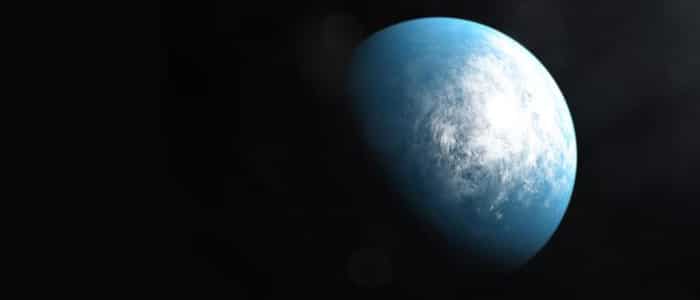We will be discussing Toi 700 D more in-depth today to see what we can find out about the possibility of it being habitable. The question is, can we live on Toi 700 D. Let’s find out.
TOI 700 D
The first Super-Earth discovery ever made by TESS, NASA’s Transiting Exoplanet Survey Satellite, was of TOI 700 D. It resides 100 light-years away in TOI 700’s (its star) habitable zone. In addition, TOI 700 D is more significant than Earth by about twenty percent and orbits its star every thirty-seven days.
The star TOI 700 is a cool M red dwarf star that is about 40% of the size and mass of our Sun with only half the temperature. However, it still supplies TOI 700 D with 86% of the energy the Sun provides to Earth.
What Solar System Is TOI 700 D In
The Exoplanet TOI 700 D is the outermost planet in the TOI 700 solar system located in the NGC 1483 Galaxy. NGC 1483 is found in the constellation of Dorado in the southern sky.

Is TOI 700 D Tidally Locked
All of TOI 700’s planets are thought, by scientists, to be tidally locked. This means that TOI 700 D rotates only once per orbit. Which, in turn, keeps half of the Exoplanet in constant darkness while the other half is illuminated by daylight.
Can We Live On TOI 700 D
In general, a tidally locked planet would not be considered habitable because, on one side of it, the atmosphere would burn off, and it would be frozen on the dark side.
However, researchers have built two different models to explore the potential conditions. The first is a world that is covered in water with an atmosphere similar to but with more density than early Mars. And the other is a terrestrial or land-covered planet that is bone dry.
There is still a lot of discovery that needs to be completed. Unfortunately, we do not know enough about the atmospheric conditions on TOI 700 D to predict its habitability.
The Wrap-Up
We have found many interesting facts in our discovery. We now know that TOI 700 D is probably tidally locked to its star and is 100 light years away from Earth in the Galaxy of NGC 1483. With more research into all of the possibilities of TOI 700 D, It goes without saying that at some point, we will be able to more definitively answer the question of whether it will be able to host human life.
I hope you will join me as we explore more possibilities.
This post contains affiliate links. Learn more and read our full disclosure policy here.

If you have questions about Astro Explorations or any comments you would like to share, feel free to leave them below, and I will get back to you as soon as possible.
Disclosures & Policies
All Images Are Courtesy of NASA
References
Goddard Media Studios. (2020, January 6). TESS Mission’s First Earth-size World in Star’s Habitable-zone. Retrieved from NASA’s Goddard Space Flight Center: https://svs.gsfc.nasa.gov/13496
NASA. (2020, January 6). NASA Planet Hunter Finds Earth-Size Habitable-Zone World. Retrieved from NASA: https://www.jpl.nasa.gov/news/nasa-planet-hunter-finds-earth-size-habitable-zone-world
NASA. (2022, April 13). What is an Exoplanet. Retrieved from NASA: https://exoplanets.nasa.gov/what-is-an-exoplanet/overview/



